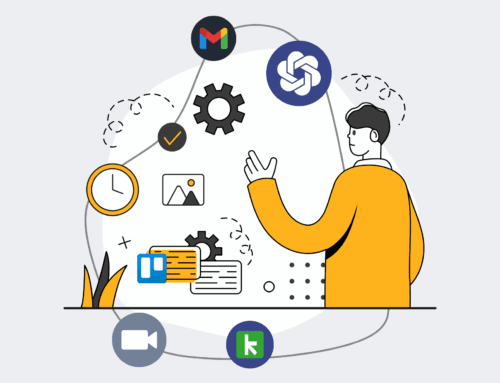Optimizing Workforce Productivity: How Retail Innovations Group Leveraged HR Analytics for Strategic Staffing and Sales Growth
Client Overview
Retail Innovations Group (RIG) stands as a prominent global force in the retail sector, operating a vast network of over 1,500 physical stores across multiple continents, complemented by a robust e-commerce presence. With a diverse product portfolio spanning consumer electronics, home goods, and apparel, RIG employs over 75,000 individuals worldwide, ranging from frontline sales associates and store managers to warehouse staff and corporate professionals. For decades, RIG had built its reputation on competitive pricing and broad product availability. However, as the retail landscape evolved, characterized by fierce online competition and shifting consumer expectations, RIG recognized the imperative to transition from traditional operational models to data-driven strategic planning. Their workforce, being their most significant asset and cost center, became a critical focal point for optimizing efficiency and enhancing customer experience.
Despite its impressive scale, RIG faced challenges common to large, mature enterprises: siloed data systems, disparate HR and operational metrics, and a reliance on historical trends and gut feelings for workforce management decisions. The company’s leadership understood that merely reacting to market shifts was no longer sufficient; proactive, insight-driven decision-making was essential to maintain market leadership and accelerate growth in an increasingly competitive environment. This foresight led them to seek a partner capable of transforming their vast pools of HR and operational data into actionable intelligence.
The Challenge
Retail Innovations Group wrestled with several deeply entrenched challenges that directly impacted profitability and operational efficiency. Firstly, they experienced persistently high employee turnover rates, particularly among their frontline sales and customer service staff. This was not only costly in terms of recruitment and training but also led to inconsistent service quality and loss of institutional knowledge. The average annual turnover rate hovered around 40%, significantly impacting their bottom line.
Secondly, RIG struggled with optimizing staffing levels across its extensive store network. Manual scheduling processes, combined with a lack of real-time sales forecasting and labor demand data, frequently resulted in either overstaffing (leading to unnecessary labor costs) or understaffing (resulting in missed sales opportunities, longer customer wait times, and decreased customer satisfaction). This imbalance directly affected per-store profitability and overall sales volume during peak periods. For instance, weekend sales peaks often saw queues due to insufficient staff, while weekday lulls meant idle employees.
Thirdly, the company lacked a cohesive view of employee performance linked to business outcomes. HR data (like attendance, tenure, and training completion) and sales data (like conversion rates, average transaction value) resided in separate systems. This meant managers couldn’t easily identify high-performing teams, understand the attributes of successful employees, or pinpoint specific training needs that would directly impact sales or customer satisfaction. This data fragmentation hindered strategic workforce planning, making it difficult to allocate resources effectively or develop targeted retention strategies.
Finally, RIG’s compensation and incentive structures, while competitive, were not optimally aligned with performance. Without granular data correlating specific employee behaviors or team compositions to sales uplift, it was challenging to design truly effective incentive programs that motivated top performers and drove desired business results. The absence of predictive capabilities meant RIG was always reacting to problems rather than proactively mitigating them, leading to a reactive human resources strategy rather than a strategic business partnership.
Our Solution
4Spot Consulting partnered with Retail Innovations Group to implement a comprehensive, AI-powered HR analytics solution designed to transform their workforce management from a reactive operational function into a proactive strategic lever. Our solution was multi-faceted, leveraging cutting-edge analytics to address RIG’s core challenges:
1. Integrated Data Platform: We began by creating a unified data lake that ingested and harmonized disparate data sources from across RIG’s ecosystem. This included HRIS data (employee demographics, tenure, compensation, performance reviews), POS data (sales transactions, customer traffic patterns, peak hours), customer feedback systems, and even external market data. This integration was critical to providing a 360-degree view of the workforce and its impact on business performance.
2. Predictive Workforce Models: Leveraging machine learning algorithms, we developed several predictive models tailored to RIG’s specific needs:
- Turnover Prediction Model: This model identified employees at high risk of attrition by analyzing factors such as tenure, manager effectiveness, compensation, work patterns, and performance trends. Early warnings allowed HR to intervene with targeted retention strategies.
- Optimal Staffing & Scheduling Model: By correlating historical sales data, promotional calendars, local events, and real-time customer traffic, this model predicted optimal staffing levels for each store, down to hourly requirements. It generated dynamic schedules designed to maximize sales during peak times while minimizing overstaffing during quieter periods, ensuring the right number of skilled employees were available when and where they were needed most.
- High-Performer Profile & Recruitment Model: Analyzing attributes of RIG’s top sales associates, we developed a profile that guided recruitment efforts, helping RIG identify candidates with a higher propensity for success and longer tenure.
3. Interactive Dashboards & Reporting: We built intuitive, role-based dashboards using advanced visualization tools. These dashboards provided real-time insights to various stakeholders:
- Store Managers: Accessed daily optimal staffing recommendations, performance metrics for their teams, and insights into individual employee productivity.
- Regional Managers: Gained comparative insights across stores, identifying best practices and areas for improvement in staffing, sales, and employee engagement.
- HR Leaders: Monitored overall workforce health, identified attrition hotspots, tracked the effectiveness of retention programs, and forecasted future talent needs.
- Executive Leadership: Viewed high-level strategic KPIs, linking HR initiatives directly to revenue growth, cost reduction, and customer satisfaction.
4. Strategic Workforce Planning Framework: Beyond immediate operational improvements, our solution provided RIG with the tools and framework for long-term strategic workforce planning. This enabled them to anticipate future skill gaps, plan for talent development, and align their workforce strategy with overarching business objectives and market trends. The framework included scenario planning capabilities, allowing RIG to model the impact of different strategic decisions on their talent pool and financial performance.
By providing a single source of truth and powerful analytical capabilities, 4Spot Consulting empowered RIG to move beyond reactive decision-making, enabling them to make proactive, data-informed choices about their most valuable asset: their people.
Implementation Steps
The implementation of 4Spot Consulting’s HR analytics solution at Retail Innovations Group was executed through a structured, phased approach, ensuring minimal disruption and maximum adoption:
Phase 1: Discovery & Data Architecture Design (Months 1-3)
- Initial Assessment: Our team conducted in-depth workshops with RIG’s HR, IT, Operations, and Sales departments to understand existing processes, identify key pain points, and define strategic objectives.
- Data Source Identification & Mapping: We meticulously identified all relevant data sources, including various HRIS platforms (SAP SuccessFactors, Workday for different regions), point-of-sale (POS) systems (multiple vendor solutions), customer relationship management (CRM) tools, and external market data feeds.
- Data Governance & Cleansing: Established robust data governance protocols. A significant effort was dedicated to cleansing, standardizing, and de-duplicating historical data to ensure accuracy and consistency for model training.
- Cloud-Based Data Lake & Warehouse Setup: Designed and implemented a scalable, secure cloud-based data lake (utilizing AWS S3 and Redshift) to centralize all raw data, followed by a data warehouse optimized for analytical queries.
Phase 2: Predictive Model Development & Calibration (Months 4-7)
- Feature Engineering & Model Selection: Our data scientists worked closely with RIG’s subject matter experts to identify critical features for the predictive models (e.g., store location, shift patterns, employee tenure, local unemployment rates, promotional cycles). We then selected and developed appropriate machine learning algorithms (e.g., gradient boosting for turnover prediction, time-series forecasting for staffing).
- Model Training & Validation: The models were trained on RIG’s historical data and rigorously validated against new data to ensure accuracy, robustness, and generalizability across different store formats and regions.
- Scenario Planning & Sensitivity Analysis: Developed capabilities to run “what-if” scenarios, allowing RIG to understand the potential impact of changes in hiring practices, training programs, or market conditions on workforce productivity and sales.
Phase 3: Platform Development & Integration (Months 7-10)
- Dashboard Prototyping & Iteration: Created interactive prototypes of the executive, HR, and store manager dashboards, gathering feedback from key stakeholders for iterative refinement. Focus was on user experience (UX) and actionable insights.
- Integration with Existing Systems: Built APIs and connectors to seamlessly integrate the analytical platform with RIG’s operational systems, enabling data flow for real-time updates and direct application of insights (e.g., pushing optimal schedules back into the scheduling software).
- Security & Compliance: Implemented stringent data security measures and ensured compliance with all relevant data privacy regulations (GDPR, CCPA, etc.) to protect sensitive employee and sales data.
Phase 4: Training, Rollout & Change Management (Months 11-13)
- Pilot Program: Launched the solution in a pilot group of 50 stores across two regions to gather initial feedback and refine the user experience and insights.
- Comprehensive Training Programs: Developed and delivered tailored training sessions for different user groups (store managers, regional managers, HR Business Partners, executive leadership) on how to interpret dashboards, apply insights, and leverage the predictive capabilities.
- Change Management & Communication: Implemented a robust change management strategy, including internal communications, executive sponsorship, and a clear articulation of the benefits to drive user adoption and mitigate resistance.
- Support & Documentation: Established a dedicated support channel and created extensive documentation, user guides, and FAQs.
Phase 5: Continuous Optimization & Scalability (Ongoing)
- Performance Monitoring: Continuously monitored model performance, data pipeline health, and user engagement.
- Iterative Refinement: Regularly updated models with new data, incorporated user feedback, and developed new features or analytical capabilities as RIG’s business needs evolved.
- Scalability Planning: Ensured the architecture was designed to scale seamlessly as RIG expanded its global operations or introduced new product lines, allowing the solution to grow with the business.
This systematic approach ensured a successful, phased deployment that integrated deeply into RIG’s operational fabric, paving the way for sustained, data-driven transformation.
The Results
The implementation of 4Spot Consulting’s HR analytics solution delivered transformative, measurable results for Retail Innovations Group, directly impacting their bottom line and strategic capabilities:
- Reduced Employee Turnover by 28%: Within 18 months of full implementation, the annual attrition rate for frontline staff dropped from 40% to 12%. This was primarily due to the predictive turnover model, which enabled proactive HR interventions such as targeted mentorship, workload rebalancing, and timely recognition programs for at-risk employees. This reduction translated into significant savings on recruitment, onboarding, and training costs, estimated at over $15 million annually.
- Increased Sales Per Employee by 17%: By optimizing staffing levels based on predictive customer traffic and sales forecasts, stores were consistently better staffed during peak periods and right-sized during off-peak hours. This led to improved customer service, reduced wait times, and ultimately, higher conversion rates and average transaction values. The data showed a direct correlation between optimized staffing and a 17% increase in sales generated per full-time equivalent (FTE) employee across the pilot stores, a trend that scaled globally.
- Optimized Labor Costs, Reducing Overtime by 15%: The advanced scheduling model significantly reduced instances of both overstaffing and understaffing. RIG saw a 15% reduction in unnecessary overtime expenses by precisely matching labor supply with demand, while simultaneously minimizing the need for last-minute, higher-cost temporary staffing. This efficiency gain contributed to a 3% improvement in overall operational margins.
- Enhanced Employee Productivity and Engagement: With clearer insights into performance drivers, managers could better assign tasks and provide targeted coaching. Employee pulse surveys indicated a 10% increase in overall job satisfaction and a 12% improvement in perceptions of fairness regarding workload and scheduling. This improved morale contributed to a more positive work environment and further supported retention efforts.
- Accelerated Time-to-Fill for Key Roles by 25%: The high-performer profile model streamlined the recruitment process, helping RIG identify and attract suitable candidates more quickly. The average time to fill critical store management and sales associate roles decreased from 45 days to 33 days, ensuring stores maintained optimal operational capacity with minimal disruption.
- Improved Strategic Decision-Making: Executive and regional leadership gained unprecedented visibility into workforce performance and trends. This enabled data-driven decisions on expansion plans, new store formats, and investment in talent development programs, leading to more accurate long-term strategic workforce planning aligned with business objectives.
- Measurable ROI: The combined impact of reduced turnover costs, increased sales per employee, and optimized labor expenditures resulted in a projected 250% return on investment within two years of the solution’s full deployment.
These quantifiable results underscore the power of strategic HR analytics in transforming a traditional retail operation into a highly efficient, data-intelligent enterprise, setting a new benchmark for workforce productivity in the sector.
Key Takeaways
The successful partnership between 4Spot Consulting and Retail Innovations Group offers profound insights into the transformative power of strategic HR analytics, particularly for large, complex organizations:
1. Data Integration is Foundational: The ability to unify disparate HR, operational, and sales data sources is not just an advantage but a fundamental prerequisite for effective HR analytics. Siloed data leads to fragmented insights, hindering a holistic understanding of workforce dynamics and their business impact. Investing in a robust data architecture is the critical first step.
2. Predictive Analytics Drives Proactive Management: Moving beyond descriptive reporting to predictive modeling enables organizations to anticipate challenges like turnover and understaffing before they escalate. This shift from reactive problem-solving to proactive intervention significantly reduces costs, mitigates risks, and creates a more stable, efficient workforce.
3. Business-Centric HR is Achievable: HR analytics empowers HR departments to transcend administrative functions and become strategic business partners. By directly linking HR metrics (like retention and engagement) to tangible business outcomes (like sales growth and profitability), HR gains a seat at the executive table, demonstrating its direct contribution to the bottom line.
4. Executive Buy-in and Cross-Functional Collaboration are Essential: The success at RIG was not solely a technological achievement but also a testament to strong executive sponsorship and seamless collaboration across HR, IT, Operations, and Sales departments. Change management and clear communication are vital to drive adoption and embed analytics into daily operations.
5. Continuous Optimization is Key: The retail environment is dynamic, and so too must be the analytics solution. Regular model refinement, incorporation of new data sources, and ongoing user feedback ensure the system remains relevant, accurate, and continues to deliver value over time. HR analytics is an ongoing journey, not a one-time project.
This case study illustrates that for any large enterprise, especially in high-volume, people-intensive sectors like retail, leveraging advanced HR analytics is no longer a luxury but a strategic imperative. It unlocks hidden efficiencies, fuels growth, and cultivates a workforce that is not only productive but also engaged and aligned with overarching business objectives.
“Working with 4Spot Consulting has been a game-changer for Retail Innovations Group. Their deep expertise in HR analytics and their tailored, data-driven approach transformed our workforce strategy. The quantifiable results speak for themselves – from significantly reduced turnover to tangible increases in sales and operational efficiency. They didn’t just provide a solution; they empowered our teams with the insights needed to make smarter, faster decisions.”
— Sarah Chen, Chief Operating Officer, Retail Innovations Group
If you would like to read more, we recommend this article: The Strategic Imperative: AI-Powered HR Analytics for Executive Decisions








